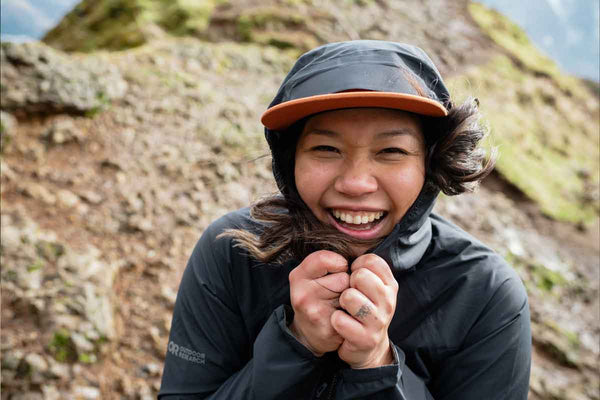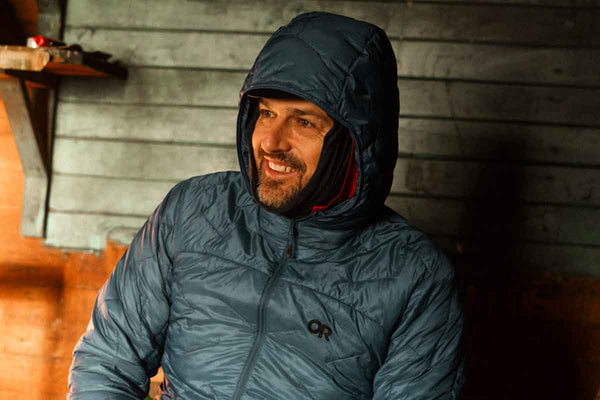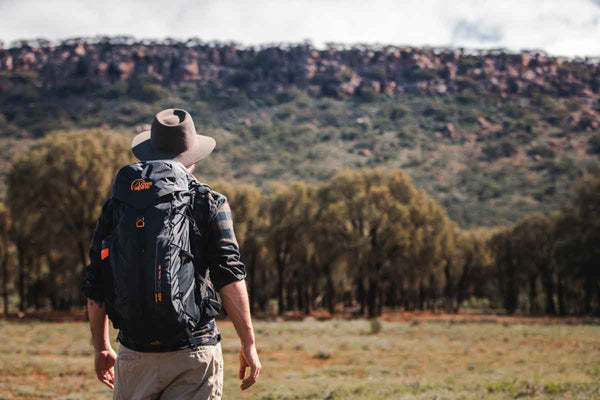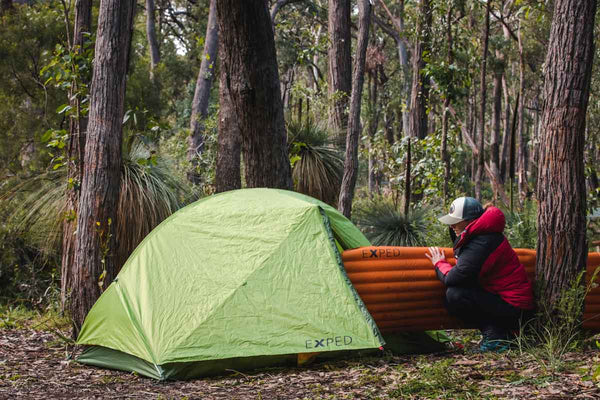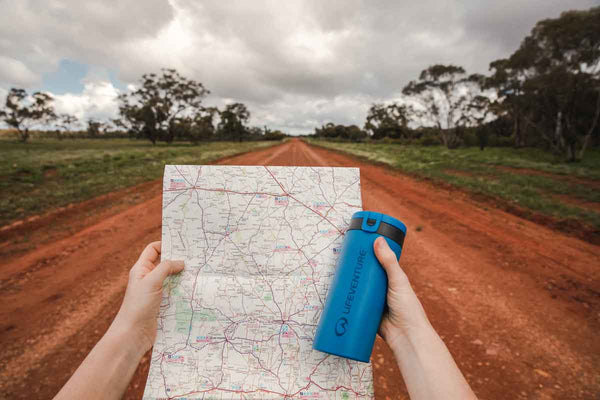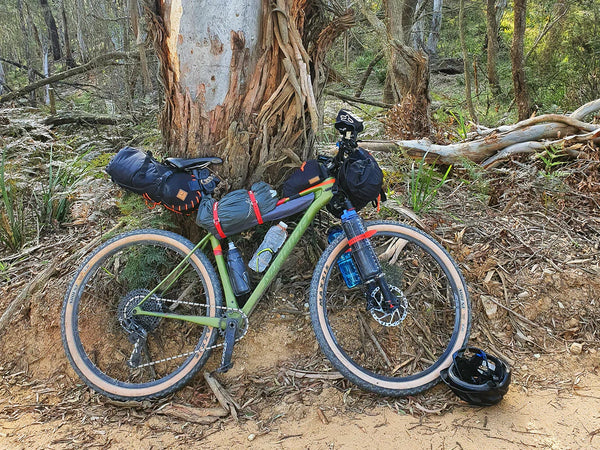
Going from Bipedal to Bicycle. How your hiking gear can take you further
By Flynn Armstrong
With overseas travel seemingly further and further away more people are looking at what they can do in their own backyard to unwind. Lucky for us we have loads of fun outdoor adventures on our doorstep.

Bikepacking and Touring is a popular new outdoor pursuit and we’ve had alot of customers coming through the store asking for advice on what gear to use and what is appropriate. The biggest principle in bike packing is keeping your gear small and light, small as you don't have much space on your bike to store everything and light as a heavy bike is one of the worst things to pedal around. I’ll go through gear recommendations in regards to camping gear but if you have any questions about what bike or what bags to look at I would direct you to sydney's local Omafiets for great advice and gear.
Camping Equipment:
Shelter:
For your shelter I personally recommend tents as they offer the best weather protection and comfort, some people will use Bivvies or Tarps. I personally find tarps in general are too open to the elements and they often require more time and fussing around than a tent which after a long day on the bike I personally don't have the patience for. Bivvies offer excellent weather protection but at the price of condensation and having to zip yourself into a tiny little sac for the whole night which isn't a particularly enjoyable experience. My personal pick tents wise is the One Planet Goondie 1 Mesh 7d Fly, coming in at only 1255g it’s light and small enough to mount on my handlebars along with my sleeping bag and mat, It’s sturdy in even the worst weather and is roomy inside with a big vestibule.
Sleeping Bag:
Most people will lean towards a mummy shaped sleeping bag as it reduces weight and bulk, Sea to Summit’s Spark/Flame range of sleeping bags are some of the warmest bags for their weight and are very popular among bike packers. For summer missions I personally take a One Planet Quest Zero Quilt as I find it alot more versatile, when the temperature starts to drop the Spark is the way to go though.
Sleeping Bag Liner:
Having one of these is a bit of a luxury as its another bit of kit to carry but it will help keep your sleeping bag clean after a long and dirty day on the bike. If your bag isnt warm enough for where you are going you may need to consider a warmth boosting liner.
Sleeping Mat:
Sea To Summits Ultralight and Ultralight Insulated are some of the smallest lightest mats around and are perfect for bike packing. If you are going to be heading out in colder weather the insulated version is the way to go. I would also consider looking at the Extra Small version which is a 2/3rd size pad so your legs hang off the end which reduces weight and bulk.
Pillow:
Much like a sleeping bag liner a pillow is non essential but if you value a good night's sleep and still want to keep the weight down I recommend Sea To Summits Aeros UL Pillow (70g) in Large.

Cooking Setup:
Stove:
There are two ways to go with stoves. You can go with a fully integrated Setup Like a Jetboil or a separated stove and pot.
- Integrated Setup
This Is what I personally use, It’s more fuel efficient but weighs a little more and packs a little larger. For longer missions these are great as they reduce the amount of fuel you need to carry, I also enjoy the stability and ease of use that comes along with them. The Jetboil Zip (372g) is their lightest and smallest offering but If you are wanting something a bit more versatile I would recommend the larger Minimo (415g) which also has a regulator making it easier to cook fresh food.
- Separated Setup
If you want to go as light and small as possible this is the way to go. If you pickup an Optimus Crux (83g) and Keiths 900ml Pot (121g) you can fit the stove with a 100g gas canister and a folding spork inside the pot making it one of the smallest and lightest setups out.
Bowl:
A little luxury, I personally will just eat out of my stoves pot but if you want to want one Sea to Summits Collapsible X Bowl (80g) Is hard to pass up packability wise.
Mug:
I recommend Sea to Summit collapsible X Mug (80g) which conveniently nestles in their bowl. It comes in 10-20g heavier than a titanium version but the packability makes it a worthwhile sacrifice for me.
Cutlery:
Keiths folding Spork and spoon are the way to go as it doesnt get much smaller and lighter.
Water purification:
This is an article all to itself so if you want to have a read check out our Water Treatment Guide
Clothing:
Thermals:
Icebreaker’s merino thermals are great as their warmth to weight ratio is excellent depending on what temperatures you are expecting you will need to make a call between the warmer 260 weight and the lighter 200 weight.
Base Layers:
For your top I highly recommend icebreakers techlite shirts as the merino helps to keep your odor in check. If you are expecting alot of sun it would be worth looking into a long sleeve such as Mont’s Lifestyle Vented LS Shirt as It is very breathable and will help to keep the sun off your arms and neck with a popup collar.
Mid Layer:
My personal go to is the Arcteryx Atom LT which is lightweight, functions as a windbreaker and the hood fits over most road helmets. If you don't need something quite that warm the Mont Grid Pro hoodie is awesome and comes in substantially cheaper. The main downside is it doesn't have any windblocking properties by itself so you will need to layer a rain jacket over it while riding.
Down Jacket:
These are a great layer to have as while you are cycling you don't need much insulation as you tend to keep yourself warm just from your heat output but when you stop you want something very warm to whack on. Down jackets are great as they pack very small and have the highest warmth to weight ratio out of any style of jacket so when they arent in use you barely notice that they are there. The Mont Zero and Arc'teryx Cerium LT are my favourites as they pack down to the size of a Nalgene and will keep me warm down to about 0 degrees.
Shell Layer:
This is a really important layer as you want it to help keep the rain off, but also not let you overheat as you have a very high energy output while cycling. Outdoor Research's Microgravity is the best from our range as It uses their new Ascent shell fabric which is 2x more breathable than Gore-tex and is a little stretchy making it comfortable for long days on the bike the only downside is that compared to a Gore-tex jacket it has a lower water head at 15000mm compared to 20000-30000mm. If you are looking for the extra waterhead of a Gore-tex style fabric Mont’s Supersonic Jacket is great with a 30000mm waterhead, pit zips for added breathability and an athletic cut which is great for cycling in.
If you've got any questions about the above recommendations give us a buzz or come in for a chat.


